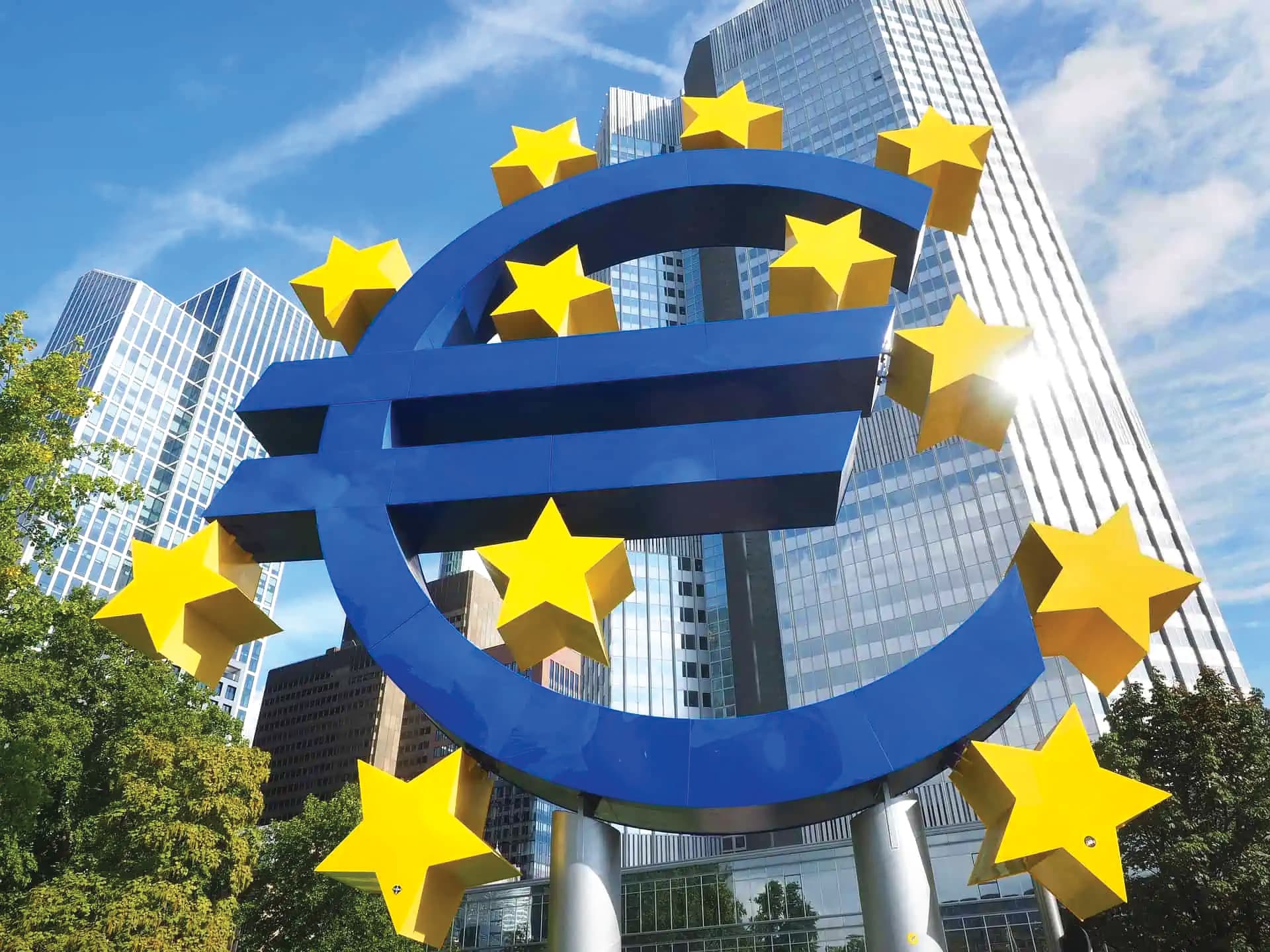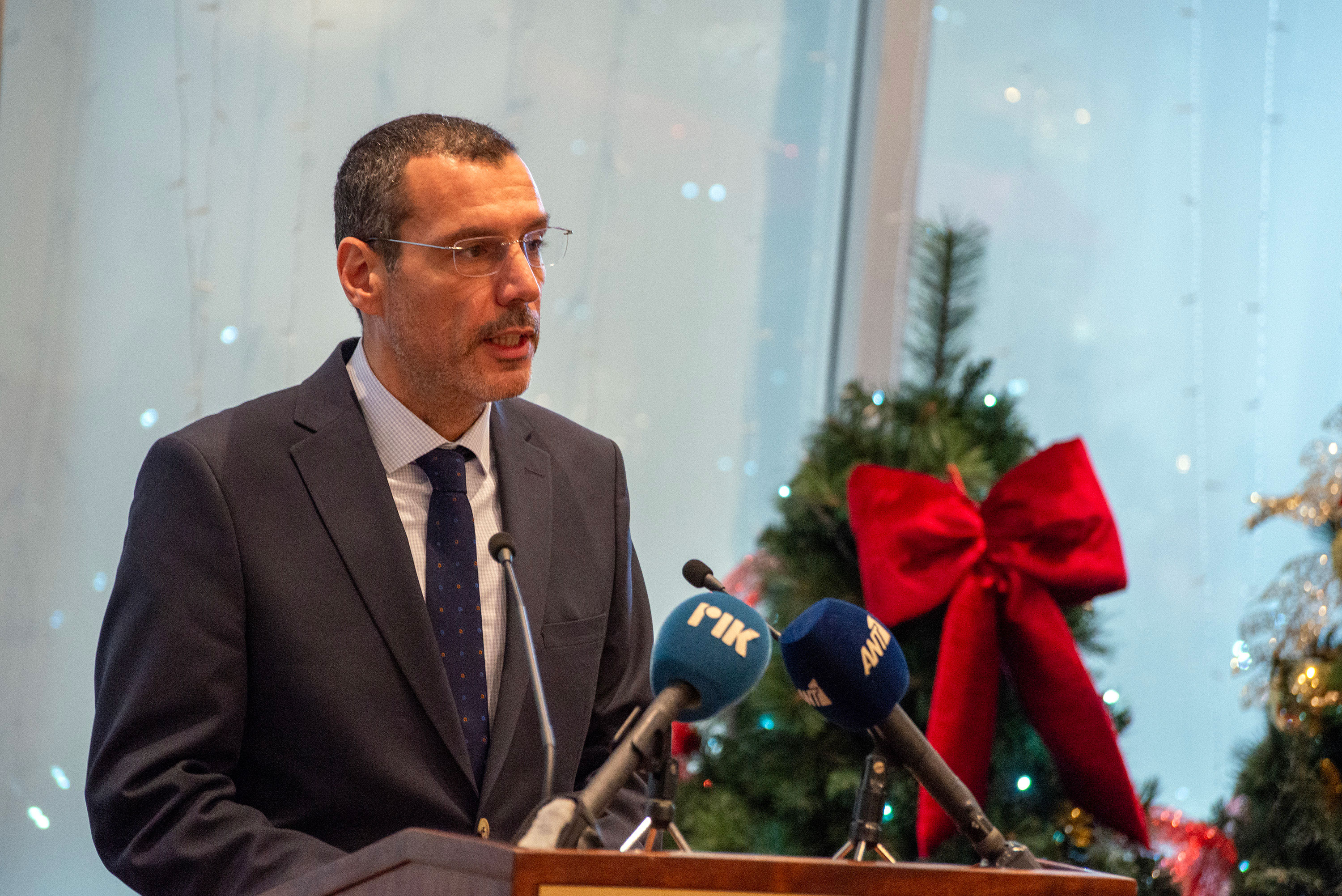The European Central Bank’s decision to hold interest rates gives the eurozone time to assess growing trade risks and maintain financial stability, according to fintech app Plum.
Following the ECB’s governing council meeting on Thursday, the central bank announced that it would keep the three key interest rates unchanged, with inflation currently at the ECB’s medium-term target of 2 per cent.
Inflation has stabilised around the ECB’s medium-term target of 2 per cent, and the governing council noted that incoming data remains broadly consistent with its previous assessment.
Domestic price pressures are continuing to ease, supported by slower wage growth across the euro area.
The ECB said that the eurozone economy has shown resilience, despite a challenging global backdrop.
This resilience is partly due to the effects of earlier interest rate cuts.
However, the ECB warned that the external environment remains highly uncertain. Trade disputes were cited as a major factor contributing to this uncertainty.
Moreover, the council reiterated its aim of stabilising inflation at the 2 per cent target over the medium term.
It also stressed that its monetary policy will remain data-dependent and assessed on a meeting-by-meeting basis.
The ECB stated that future decisions will be shaped by its evaluation of the inflation outlook and the risks surrounding it.
These assessments will be informed by economic and financial data, as well as developments in underlying inflation and the strength of monetary policy transmission.
The ECB emphasised that it is not committing to any specific rate trajectory.
The interest rates on the deposit facility, main refinancing operations, and marginal lending facility will remain at 2.00 per cent, 2.15 per cent, and 2.40 per cent respectively.
In addition, the central bank confirmed that the portfolios of the Asset Purchase Programme (APP) and the Pandemic Emergency Purchase Programme (PEPP) are continuing to decline gradually.
This is because the Eurosystem no longer reinvests the principal payments from maturing securities.
The ECB reaffirmed its readiness to intervene if necessary to ensure effective monetary policy transmission.
It said that the governing council remains prepared to adjust all its instruments within its mandate to stabilise inflation at the 2 per cent target in the medium term.
The ECB also highlighted the role of the Transmission Protection Instrument (TPI), which is designed to counter disorderly market dynamics that could impair the implementation of monetary policy across the euro area.
According to fintech firm Plum, which has offices in Cyprus and Greece and is headquartered in the United Kingdom, the ECB’s latest move was widely expected.
Plum said the central bank is exercising caution as it awaits fresh economic forecasts in September and monitors ongoing tariff negotiations with the United States.
Isabel Schnabel, a member of the ECB executive board, had previously indicated that “interest rates are also in a good place, and the bar for another rate cut is very high”.
Plum stated that the ECB’s decision allows space for further rate cuts if talks with the United States over tariffs break down and the euro continues to strengthen.
“The ECB is giving itself time and space to assess how trade uncertainties play out,” said Victor Trokoudes, CEO and co-founder of Plum.
“For Greek consumers, the rate hold means interest on savings and loans will remain steady for now,” he added.
“But with the euro strengthening and geopolitical uncertainty rising, the EU’s competitiveness is being challenged,” he continued.
“It’s more important than ever for people in Greece to actively manage their money and prepare for shifting conditions,” he said.
“Financial resilience through better saving, investing, and planning will be key to navigating what’s ahead,” he concluded.
Plum further highlighted that the contrast with the United States is becoming increasingly striking, despite the different political pressures faced by both central banks.
While the interest rate differential might suggest a weaker euro, the single currency has in fact gained over 10 per cent against the US dollar since the start of the year. However, Plum said that the dollar has recently begun to recover some of those losses.
Looking ahead, Plum said it is difficult to predict the ECB’s next move. The imposition of 30 per cent tariffs by the United States could cause serious harm to the eurozone economy.
At the same time, increased fiscal spending, particularly to meet new NATO commitments, could push inflation higher in the region.
Plum concluded that the case for further rate cuts remains finely balanced and will depend on whether higher public expenditure can offset the downward pressure of tariff threats and a stronger euro.







Click here to change your cookie preferences